Abstract
Pigeons received equal variable-interval reinforcement during presentations of two line-orientation stimuli while five other orientations appeared in extinction. Component duration was 30 seconds for all orientations and the sequence was arranged so that each orientation preceded itself and each other orientation equally often. The duration of one component (0°) was shortened to 10 seconds and the other (90°) was lengthened to 50 seconds. All animals showed large increases in response rate in the shortened component and this increase was recoverable after an interpolated condition in which all components were again 30 seconds in duration. This effect was replicated in a second experiment in which component duration was changed from 150 seconds to 50 seconds and 250 seconds. An examination of local contrast effects during the first experiment showed that the shortened component produced local contrast during subsequent presentations of the lengthened component, just as would a component associated with more frequent reinforcement. When the presentation sequence was changed so that the lengthened component was always followed by the shortened component, response rates generally increased during the lengthened component. When the sequence was arranged so that the shortened component always preceded the longer component, response rate decreased in the former. These effects, as well as the increases in response rate following change in component length, seem not to be the product of local contrast effects among components.
Keywords: component length, transitions, local contrast, key peck, pigeons
Full text
PDF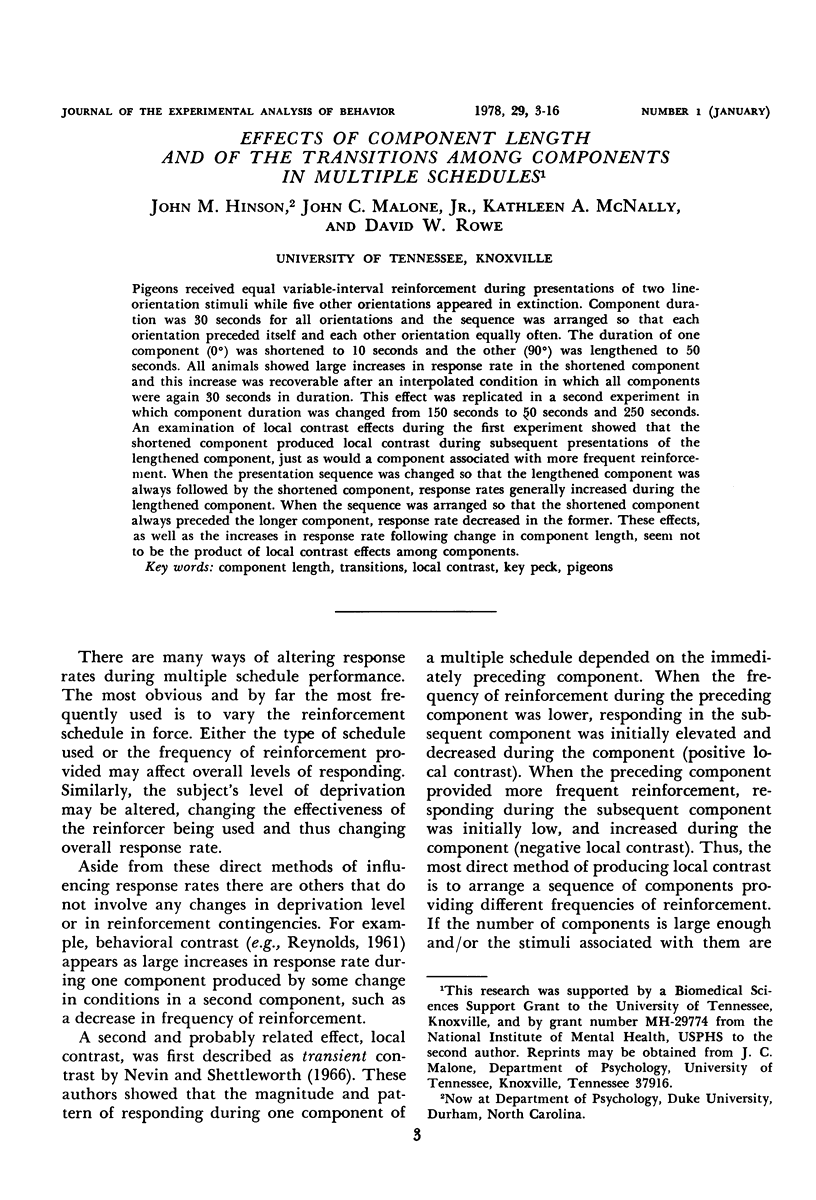
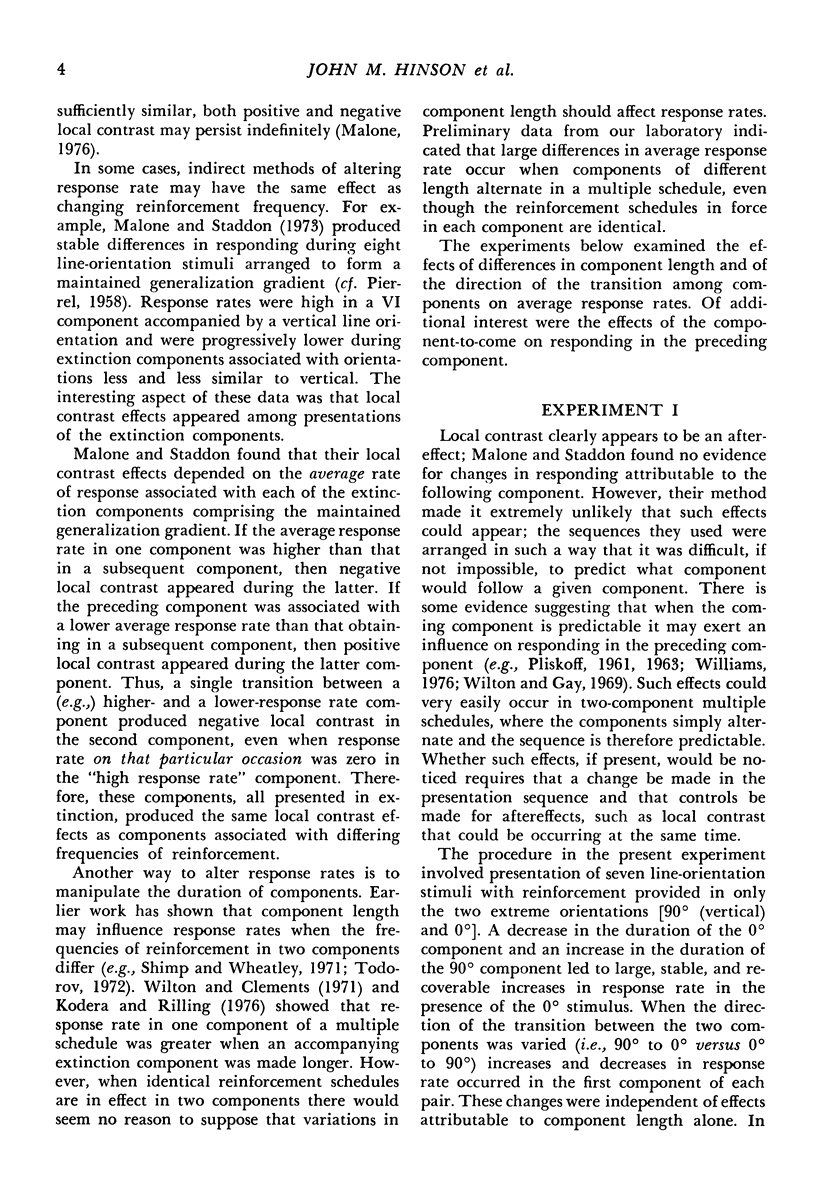
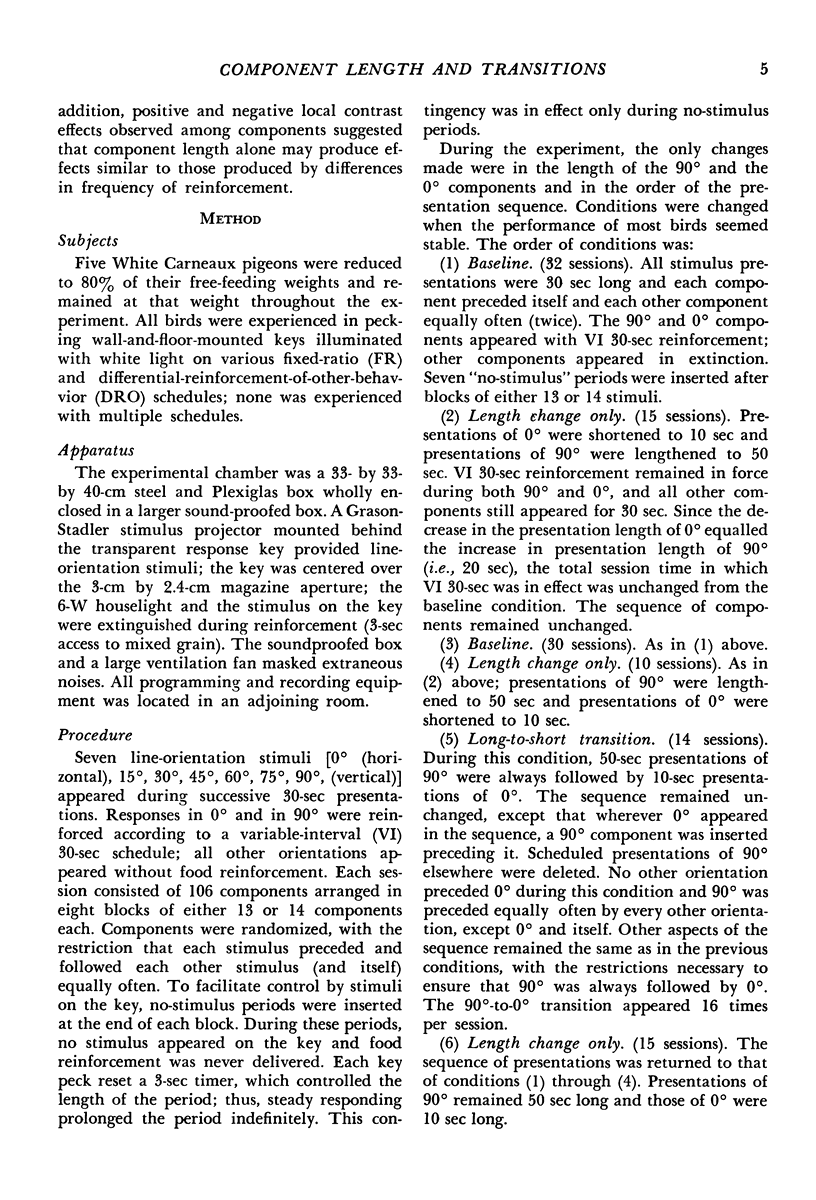

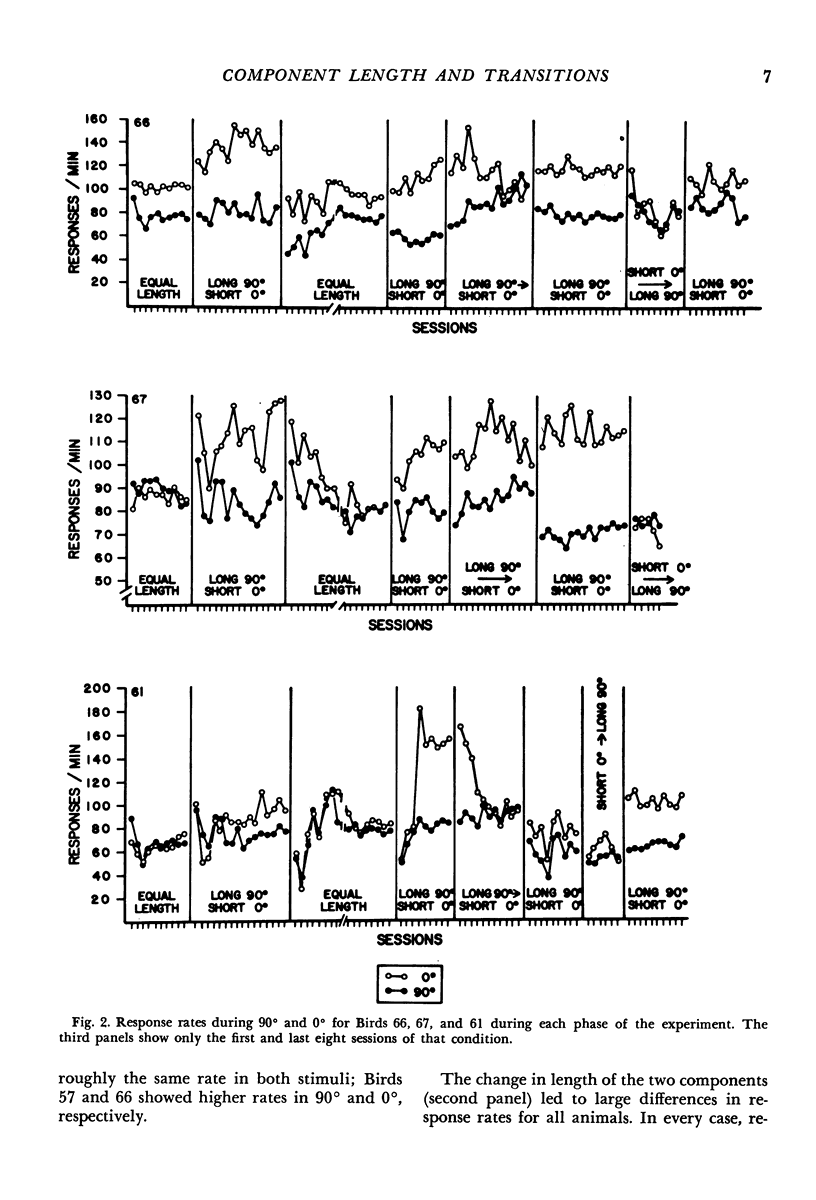
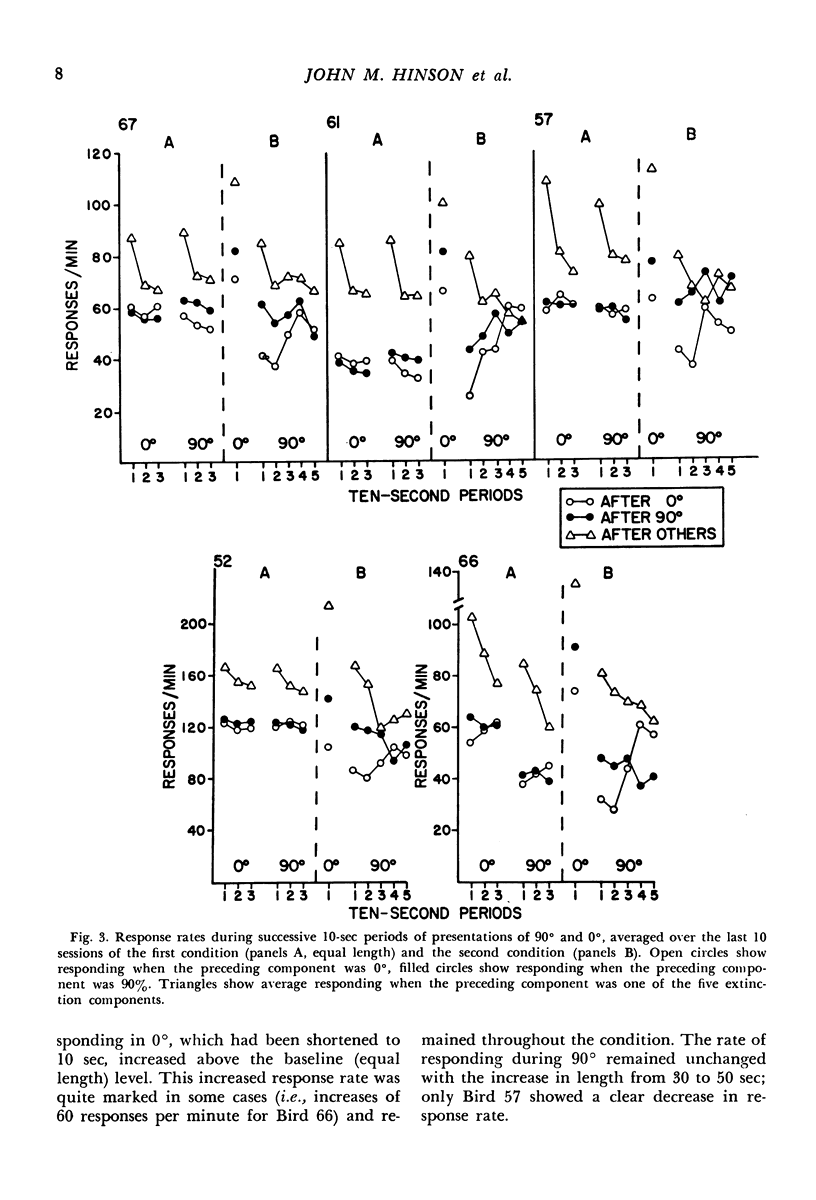
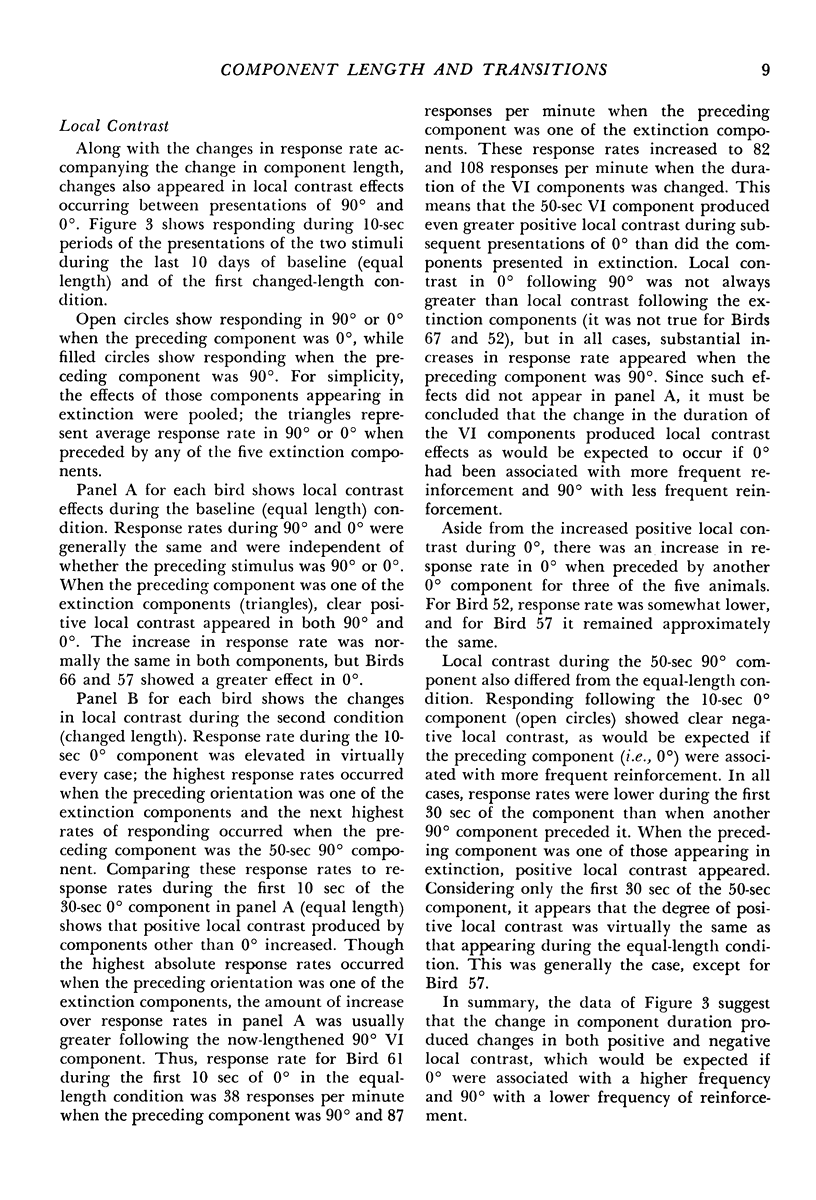
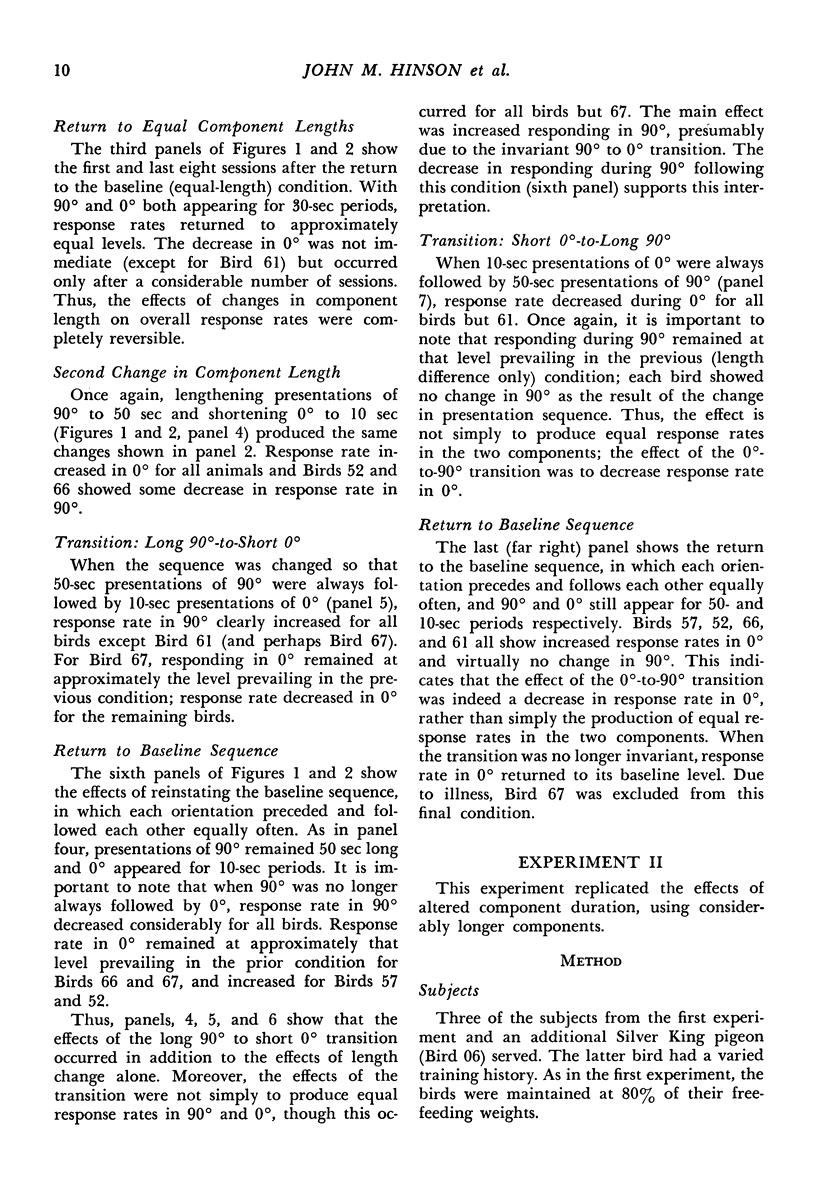
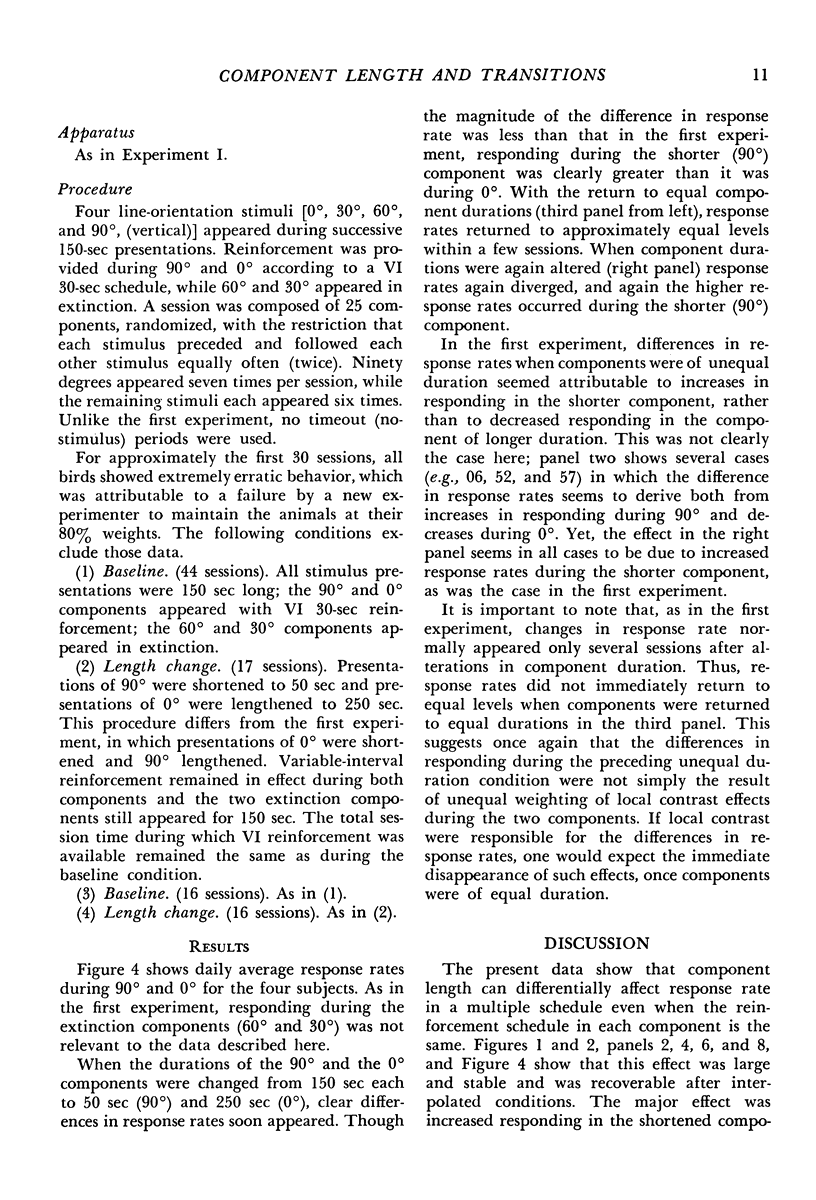
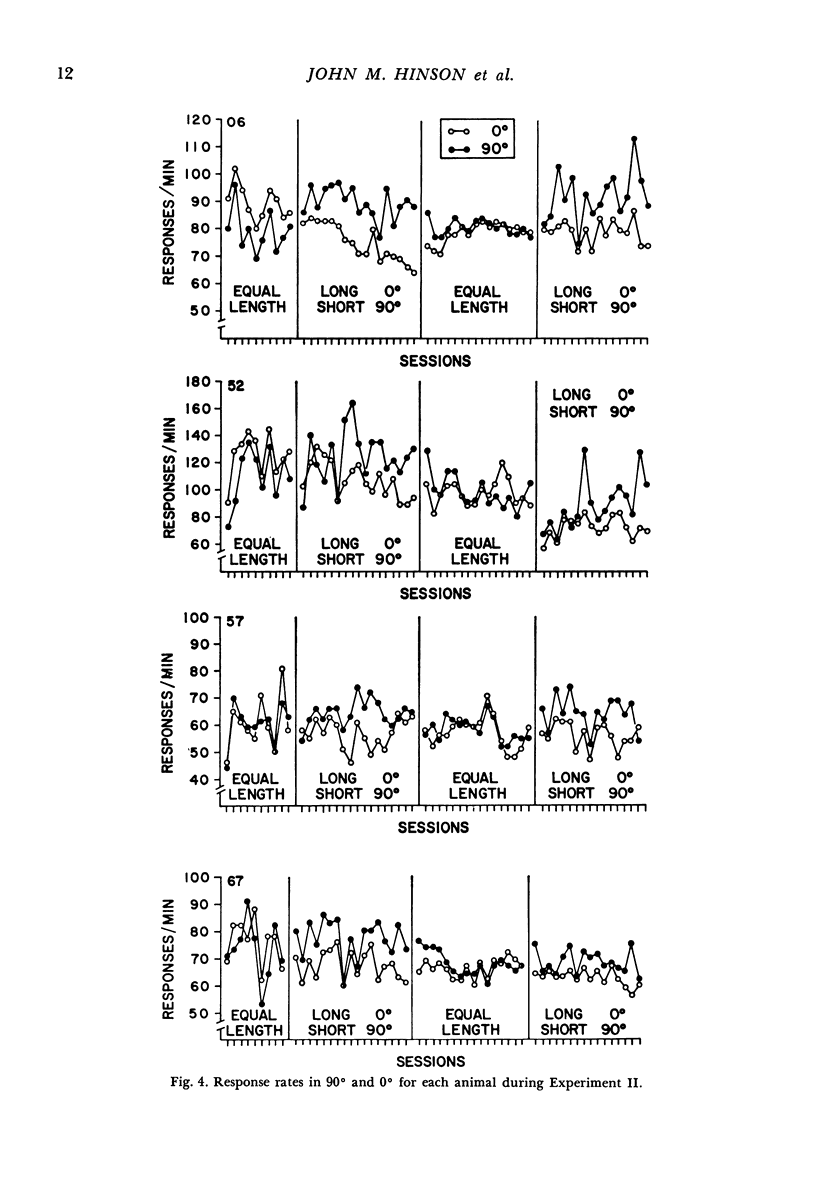
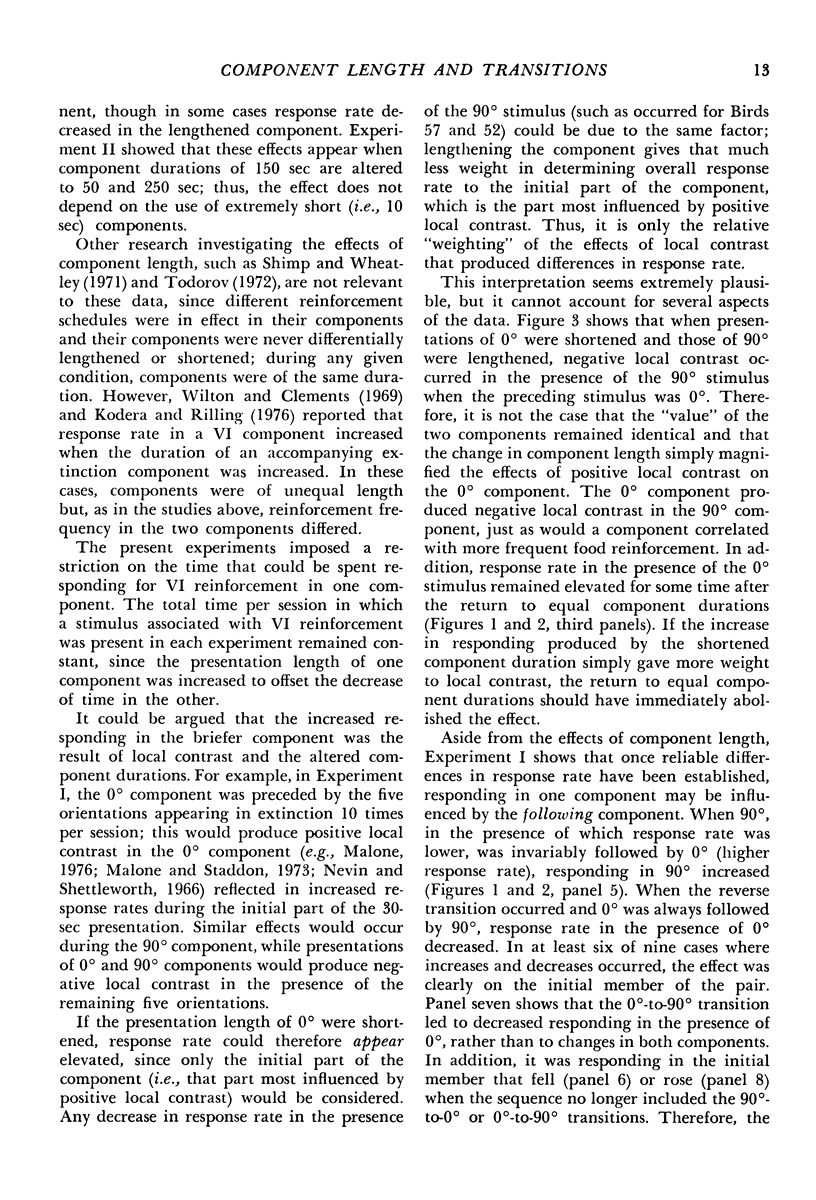
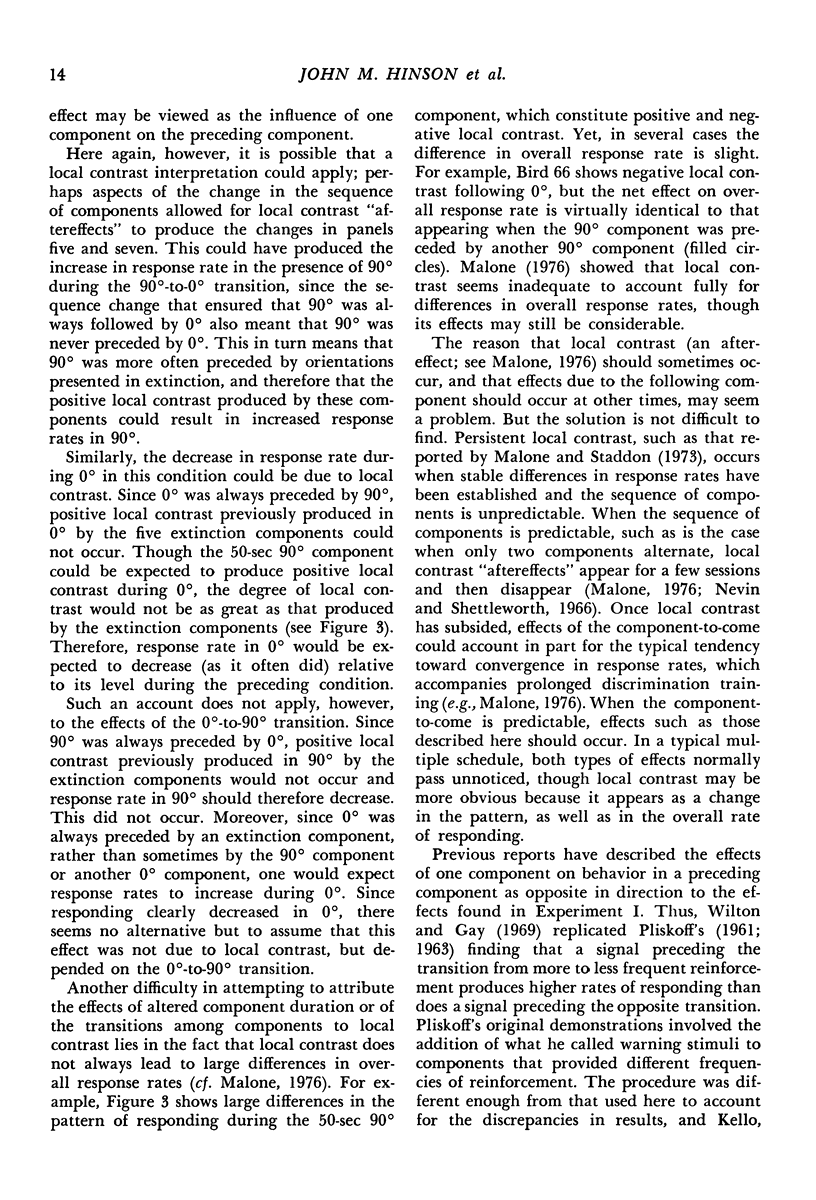
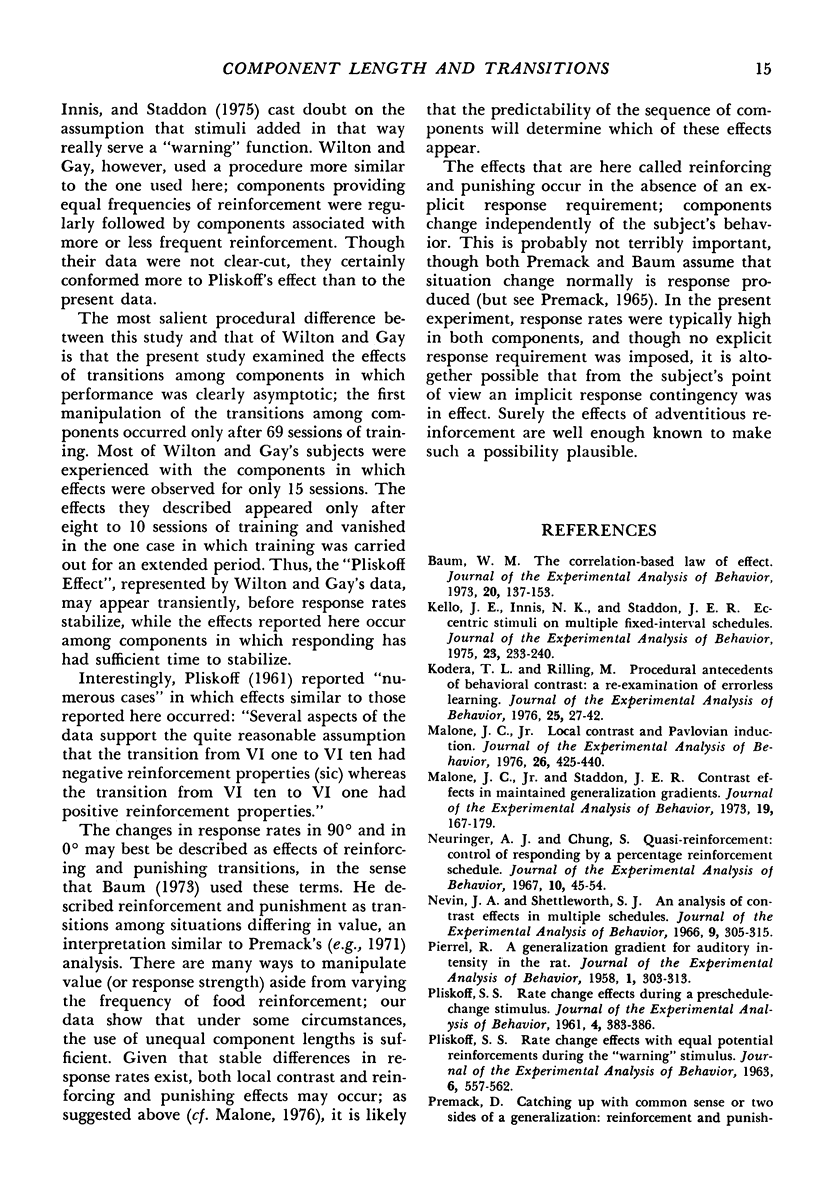
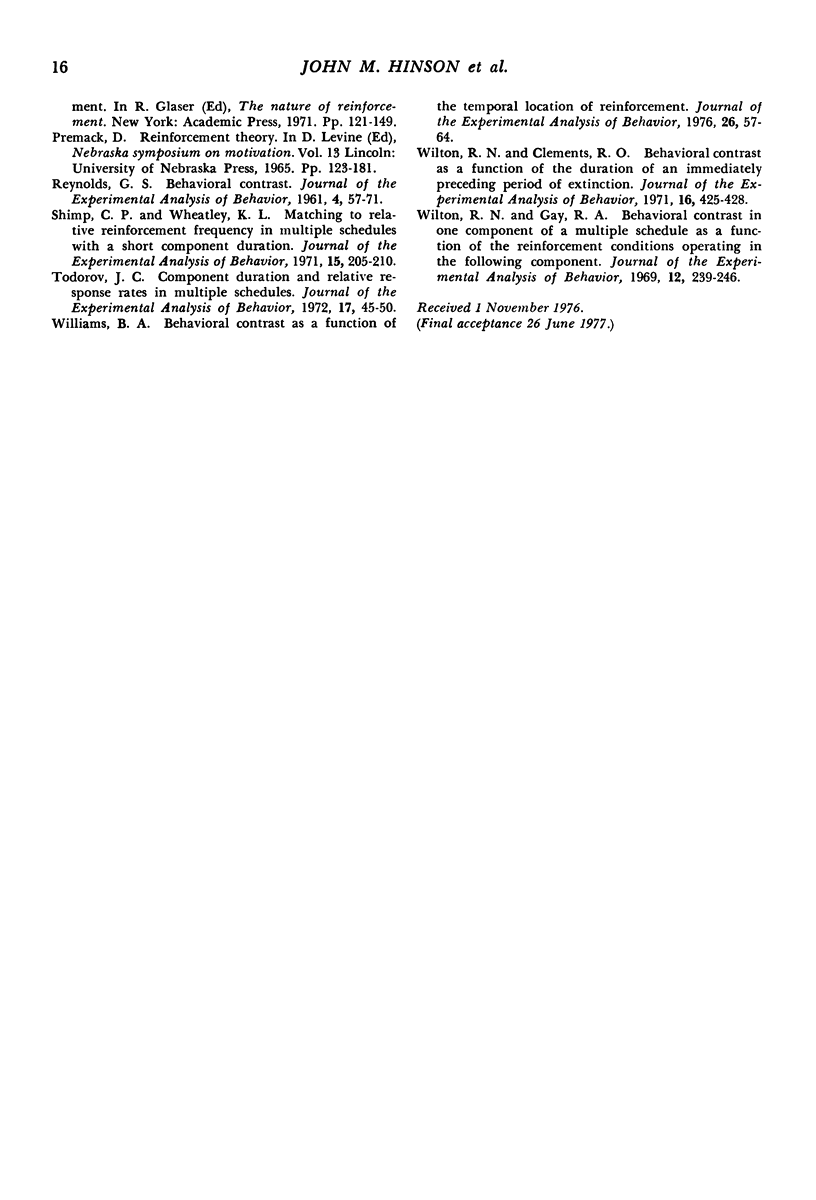
Selected References
These references are in PubMed. This may not be the complete list of references from this article.
- Baum W. M. The correlation-based law of effect. J Exp Anal Behav. 1973 Jul;20(1):137–153. doi: 10.1901/jeab.1973.20-137. [DOI] [PMC free article] [PubMed] [Google Scholar]
- Kello J. E., Innis N. K., Staddon J. E. Eccentric stimuli on multiple fixed-interval schedules. J Exp Anal Behav. 1975 Mar;23(2):233–240. doi: 10.1901/jeab.1975.23-233. [DOI] [PMC free article] [PubMed] [Google Scholar]
- Kodera T. L., Rilling M. Procedural antecedents of behavioral contrast: a re-examination of errorless learning. J Exp Anal Behav. 1976 Jan;25(1):27–42. doi: 10.1901/jeab.1976.25-27. [DOI] [PMC free article] [PubMed] [Google Scholar]
- Malone J. C. Local contrast and Pavlovian induction. J Exp Anal Behav. 1976 Nov;26(3):425–440. doi: 10.1901/jeab.1976.26-425. [DOI] [PMC free article] [PubMed] [Google Scholar]
- Malone J. C., Staddon J. E. Contrast effects in maintained generalization gradients. J Exp Anal Behav. 1973 Jan;19(1):167–179. doi: 10.1901/jeab.1973.19-167. [DOI] [PMC free article] [PubMed] [Google Scholar]
- Neuringer A. J., Chung S. H. Quasi-reinforcement: control of responding by a percentage-reinforcement schedule. J Exp Anal Behav. 1967 Jan;10(1):45–54. doi: 10.1901/jeab.1967.10-45. [DOI] [PMC free article] [PubMed] [Google Scholar]
- Nevin J. A., Shettleworth S. J. An analysis of contrast effects in multiple schedules. J Exp Anal Behav. 1966 Jul;9(4):305–315. doi: 10.1901/jeab.1966.9-305. [DOI] [PMC free article] [PubMed] [Google Scholar]
- PLISKOFF S. S. RATE-CHANGE EFFECTS WITH EQUAL POTENTIAL REINFORCEMENTS DURING THE "WARNING" STIMULUS. J Exp Anal Behav. 1963 Oct;6:557–562. doi: 10.1901/jeab.1963.6-557. [DOI] [PMC free article] [PubMed] [Google Scholar]
- PLISKOFF S. Rate-change effects during a pre-schedule-change stimulus. J Exp Anal Behav. 1961 Oct;4:383–386. doi: 10.1901/jeab.1961.4-383. [DOI] [PMC free article] [PubMed] [Google Scholar]
- Pierrel R. A generalization gradient for auditory intensity in the rat. J Exp Anal Behav. 1958 Oct;1(4):303–313. doi: 10.1901/jeab.1958.1-303. [DOI] [PMC free article] [PubMed] [Google Scholar]
- REYNOLDS G. S. Behavioral contrast. J Exp Anal Behav. 1961 Jan;4:57–71. doi: 10.1901/jeab.1961.4-57. [DOI] [PMC free article] [PubMed] [Google Scholar]
- Shimp C. P., Wheatley K. L. Matching to relative reinforcement frequency in multiple schedules with a short component duration. J Exp Anal Behav. 1971 Mar;15(2):205–210. doi: 10.1901/jeab.1971.15-205. [DOI] [PMC free article] [PubMed] [Google Scholar]
- Todorov J. C. Component duration and relative response rates in multiple schedules. J Exp Anal Behav. 1972 Jan;17(1):45–49. doi: 10.1901/jeab.1972.17-45. [DOI] [PMC free article] [PubMed] [Google Scholar]
- Williams B. A. Behavioral contrast as a function of the temporal location of reinforcement. J Exp Anal Behav. 1976 Jul;26(1):57–64. doi: 10.1901/jeab.1976.26-57. [DOI] [PMC free article] [PubMed] [Google Scholar]
- Wilton R. N., Clements R. O. Behavioral contrast as a function of the duration of an immediately preceding period of extinction. J Exp Anal Behav. 1971 Nov;16(3):425–428. doi: 10.1901/jeab.1971.16-425. [DOI] [PMC free article] [PubMed] [Google Scholar]
- Wilton R. N., Gay R. A. Behavioral contrast in one component of a multiple schedule as a function of the reinforcement conditions operating in the following component. J Exp Anal Behav. 1969 Mar;12(2):239–246. doi: 10.1901/jeab.1969.12-239. [DOI] [PMC free article] [PubMed] [Google Scholar]


